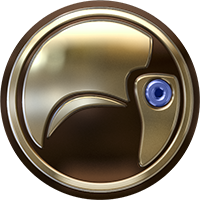Spotmask World Position¶
This render element stores position data for all objects. This allows you later to make selections and produce effects based on the 3d space position of objects within your rendered image.
Options¶

Clamp Color Space
By default Spotmask World Position stores vector data that goes far beyond the normal range expected for colors. Viewing the rendered file in an image viewer will often not show a recognizable image like for example normal maps do.
This behavior is fine for compositing but some software does not support the rendered file at all if its data exceeds the normal color range. By using the clamping option you can have all vector data translated to the visible color space that maps all channels into the range between 0.0 and 1.0. Only use this option when you need it for compatibility reasons.
Spotmask Center
Clamping to the visible color space causes the center of your scene to correspond with the color grey (0.5, 0.5, 0.5).
If your scene is not in or near the center you might want to spefify another point thatn the world coordinate root as your center point.
Spotmask Radius
The radius specifies the furthest points from the center that can still be represented within the colorr ange. Every location beyond the radius will be clamped and you can no longer separate it from other points correctly. Your radius should always be large enough to contain everything you’re rendering in your world position pass.
Pick Reference
Manually setting a center and a radius is inconvenient in a large scene with a lot of movement. To make it easier to judge if your settings are fine you can pick an object in the scene and have the point and radius calculated based on it. To quickly get the correct data build a box in the scene that contains all your objects in all frames and then use the pick option to retrieve the correct data. Afterwards you can delete the box again.
Output
Axis Assignment
This specifies how the position data is mapped to the 3 color channels of the output image.
The default corresponds to the most widely used configuration and most software that utilizes velocity maps also includes options to swap channels on demand, so you’ll rarely need to adjust these options at all.
Coordinate Space
This option allows you to chooce the reference system for your position data
World Space
All posiitons in the scene are based to their absolute world space location. This is the option you usually want to use to make selections during compositing.
Object Space
Each object uses its own coordinate system for its positions. Moving an object around in the scene will not change the data and different objects in different locations can have the same position data.
Camera Space
The object positions are based on the camera view. The Z Axis corresponds to a Z depth pass, the other channels store how far above, below or to the side of the camera the object is positioned.
